Aaron N. Johnston (U.S. Geological Survey)
Jeremy J. Kiszka (Florida International University)
Aaron J. Wirsing (University of Washington)
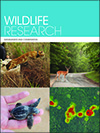
Wildlife Research
Volume 49 Number 1 2022
Special IssueThe rapidly expanding role of drones as a tool for wildlife research

Drones have emerged as a popular wildlife research tool, but their use for many species and environments remains untested and research is needed on validation of sampling approaches that are optimised for unpiloted aircraft. Here, we present a foreword to a special issue that features studies pushing the taxonomic and innovation boundaries of drone research and thus helps address these knowledge and application gaps. We then conclude by highlighting future drone research ideas that are likely to push biology and conservation in exciting new directions. Photograph credit: Kate Sprogis.
 , Huyen Nguyen, Saul Cowen
, Huyen Nguyen, Saul Cowen  , Michael Magrath, Karen Marsh, Sarah Bell and Josh Bobruk
, Michael Magrath, Karen Marsh, Sarah Bell and Josh Bobruk
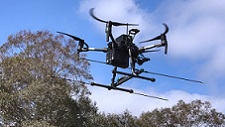
Radio-tracking techniques are important for understanding movements, behaviours and survival of many wildlife species, and provide essential data for effective conservation management. This study used viewshed analyses to compare survey coverage when using traditional hand-held and innovative drone-based radio-tracking techniques. Drone-based surveys were demonstrated to cover substantially greater areas than hand-held surveys for a diversity of threatened species and landscapes, highlighting some key advantages of drone-based radio-tracking for wildlife researchers and conservation managers. Photograph by Wildlife Drones.
 , Gilles Le Moguédec, Cindy Assio, Rumsaïs Blatrix, Michel N'dédé Ahizi, Georges Codjo Hedegbetan, Nathalie Gnanki Kpera, Vincent Lapeyre, Damien Martin, Pierrick Labbé and Matthew H. Shirley
, Gilles Le Moguédec, Cindy Assio, Rumsaïs Blatrix, Michel N'dédé Ahizi, Georges Codjo Hedegbetan, Nathalie Gnanki Kpera, Vincent Lapeyre, Damien Martin, Pierrick Labbé and Matthew H. Shirley 
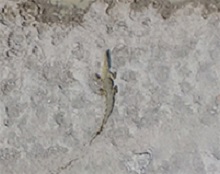
We established a standard drone crocodylian survey protocol and evaluated drones as survey tools for crocodylians in West Africa. Drones underperformed compared with nocturnal spotlight counts. But the secondary benefits, namely, precise individual size estimation, less disturbance, access to larger and more remote habitats, repeatable/quantifiable habitat assessment, and a permanent photo record, make them a compelling alternative to traditional methods. Photograph by Clément Aubert.
 , Yann Hénaut, Maria R. Arreola and Eric A. Ramos
, Yann Hénaut, Maria R. Arreola and Eric A. Ramos 
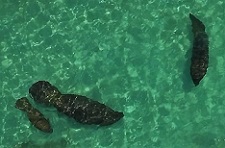
Understanding the effects of drones on wildlife is essential to their non-invasive use. We used ground and aerial observations of captive Antillean manatees before, during, and after drone flights to assess why and how they respond. Manatees reacted with changes in their activity budgets and respiration rates during and after flights. We recommend that drone operators carefully consider take-off protocol and flight times when studying manatees. Photograph by Sarah S. Landeo-Yauri.
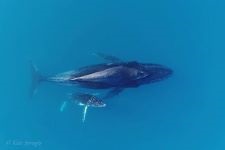
Humpback whales undertake long-distance migrations, which pose major requirements on calves. The present study investigated changes in resting behaviour and energy expenditure of mother–calf pairs on a breeding ground and highlighted how resting behaviour is important for calves. Calf growth is crucial to reduce mass-specific energy expenditure before migration. Findings emphasise the importance of limiting human-made stressors to accommodate the rapid development of calves. Photograph by Kate R. Sprogis.
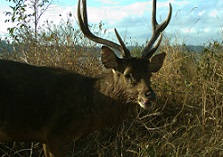
Current detection techniques for invasive deer are time consuming, expensive and have associated biases, which may be overcome through new technologies. With the use of machine learning, the time spent processing footage from unmanned aerial vehicles can be significantly reduced, with promising detection rates. Automated detection allows for fast and cost-effective monitoring of invasive ungulate species. Photograph by Ashlee Sudholz.
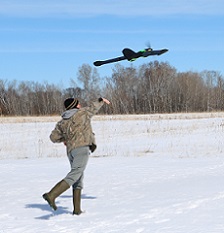
Ungulate populations are highly dynamic and require an efficient survey methodology to inform management efforts. The present study aimed to assess the efficacy of unmanned aerial systems (UAS) equipped with thermal sensors for estimating white-tailed deer densities, and found that UAS-based deer density estimates were comparable to conventional faecal pellet-group count-based density estimates. We find that UAS surveys offer an effective and temporally sensitive method for estimating wild ungulate densities. Photograph by Trina McMahon.
 , John Clulow
, John Clulow  , Neil R. Jordan
, Neil R. Jordan  , Chad T. Beranek
, Chad T. Beranek  , Shelby A. Ryan
, Shelby A. Ryan  , Adam Roff
, Adam Roff  and Ryan R. Witt
and Ryan R. Witt 
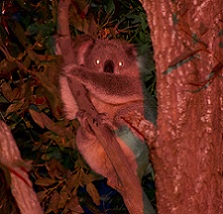
Koala monitoring is labour intensive, costly and logistically challenging; therefore, conservation practitioners require survey techniques that can maximise budgets available for monitoring. We conducted an analysis of the cost-effectiveness of drone thermal imaging technology and found that drones are more cost-effective and offer practitioners long-term cost reductions against field-based methods for koala monitoring. We propose that drone thermal imaging technology offers a long-term transferrable cost-effective monitoring tool for koala populations at all population densities across vast landscapes. Photograph by Lachlan G. Howell.
WR21034 Abstract | WR21034 Full Text | WR21034PDF (396 KB) | WR21034Supplementary Material (391 KB) Open Access Article
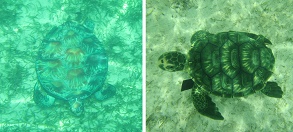
Unpiloted aerial systems (UAS), or drones, have become a tool of choice for marine wildlife studies because of ease of use and low cost, while providing reduction in animal interference and improved researcher safety. We assessed how environmental factors (water depth, wind speed, seagrass cover, and glare) affect detectability in UAS video surveys of subsurface green turtles. We recommend controlling or correcting for environmental factors when estimating animal abundances in future UAS surveys of sea turtles and other subsurface marine fauna. Photographs by Ryley Parent.